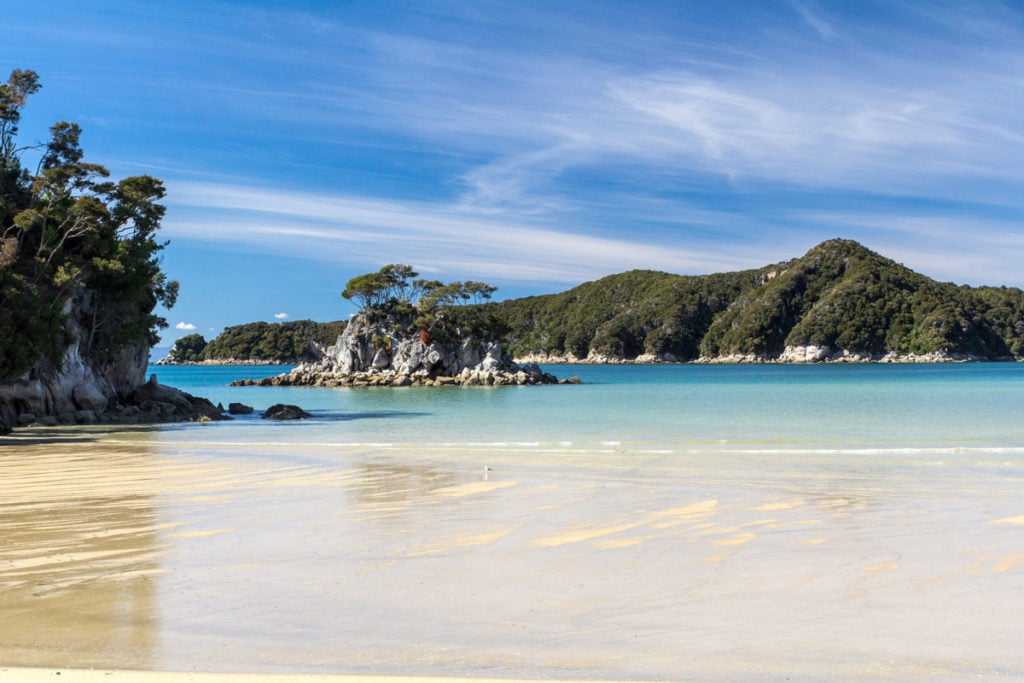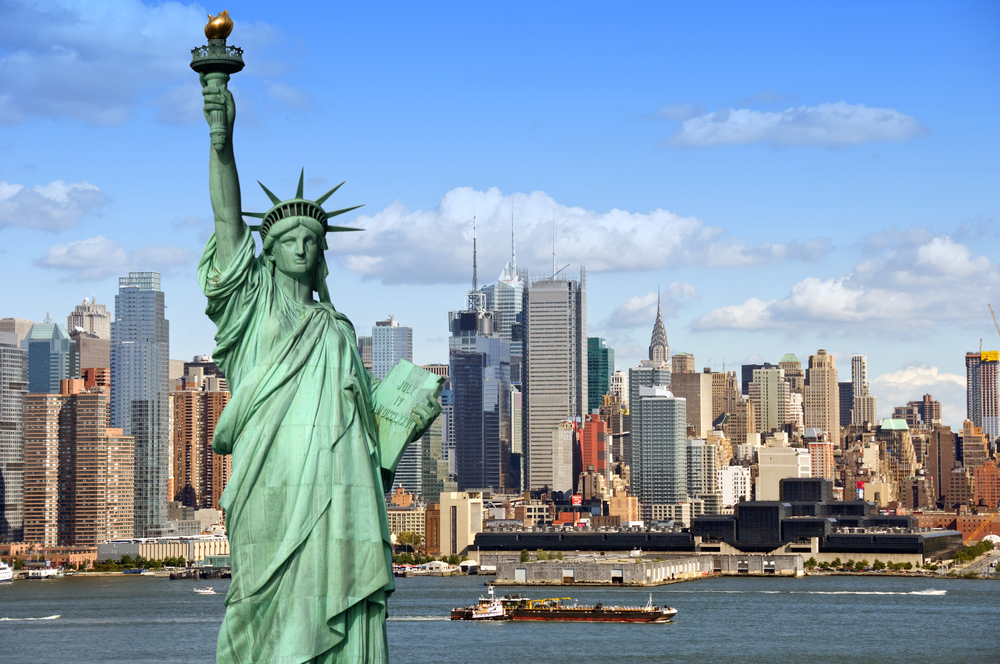Most people know that New York was originally named New Amsterdam, but what about New Zealand? Was it originally Zealand before the Dutch arrived? Where does the name come from?
Many of the answers to these questions can be found if we look back on the 17th century — the time of the Dutch East India Company, violent colonisation and Abel Tasman (you may know this as the Dutch Golden Age, but that’s a little misleading).
Dutch explorers: the first foreigners to reach New Zealand
Explorer Abel Tasman was the first European to discover the land in the South Pacific, which later became known as New Zealand and Tasmania.
Abel Tasman “discovered” (in the way that colonisers like to discover) New Zealand in 1642.
Although when he first sighted the land, he named it Staten Landt, believing it to be part of the land of that name off the coast of Argentina that is now known as Isla de los Estados.

When it was realised that New Zealand was not part of South America, the Dutch renamed it Nova Zeelandia in Latin and Nieuw Zeeland in Dutch.
Whalers, missionaries, and traders soon followed, but it wasn’t until 1840 that Britain claimed the islands as their own and established New Zealand’s first permanent European settlement at Wellington.
Abel Tasman — who was he?
Abel Tasman was a Dutch seafarer, merchant and explorer who travelled as part of his services to the Dutch East India Company (VOC).
He originally hailed from a small village called Lutjegast located in the province of Groningen. However, he later moved to Amsterdam to start his career at sea.
Tasman was born in 1603, but the first we ever hear of him is in 1631 when his name is mentioned in an Amsterdam newspaper announcing his engagement to his wife.
He and his wife would then move from Amsterdam to Batavia (modern-day Jakarta) in 1637 after he signed on for a further 10 years of service to the VOC.
READ MORE | The Dutch East India Company was richer than Apple, Google and Facebook combined
Tasman set off on his first major voyage in 1642 and would go on to explore Mauritius and Tasmania. (Yes, the island’s current name would later be derived from Tasman’s!)
From Tasmania, the expedition would eventually find itself off the coast of modern-day New Zealand.
The first meeting between the Dutch and the Maori
Tasman’s ship docked about seven kilometres off the coast of what is believed to have been Golden Bay. Four boats were sent to gather water for the crew, which led to the expedition’s first encounter with the Māori.
One of the four boats was met with a double-hulled waka (Māori canoe), and they were attacked.
Four crew members were beaten to death using clubs. The small boats quickly returned to the main ship, which was then approached by two wakas.

Tasman wrote of the exchange in his diary:
“After our people had been on board about one glass, people in the two canoes began to call out to us in gruff, hollow voices,” Tasman recalled in his diary.
“We could not in the least understand any of it; however, when they called out again several times we called back to them as a token answer. But they did not come nearer than a stone’s shot.”
“They also blew many times on an instrument, which produced a sound like the moors’ trumpets. We had one of our sailors (who could play somewhat on the trumpet) play some tunes to them in answer.”
Shots fired
The trumpet didn’t work.
Tasman’s ship began to retreat out of the bay, and Tasman noted 22 wakas now on the shore. Soon, 11 of the wakas set out for the ship.
The Dutchmen fired on the Māori, shooting one man holding a small white flag. The ship then left the bay.
Archaeological research later discovered that the Dutch had likely tried to land in a rich agricultural area, which would have, understandably, alarmed the Māori and triggered a defensive attack.
READ MORE | The life of the slaves in the Dutch colonies
The history of the Golden Age is not as golden as the name would have you believe, with the Dutch committing many atrocities against native peoples during this time.
Other Zeeland namesakes
The two major seafaring provinces of the Netherlands in its Golden Age were Holland and Zeeland.
Originally the Dutch explorers named the largest landmass of Oceania and the two islands to the southeast respectively Nieuw-Holland and Nieuw-Zeeland.
The former was eventually replaced by the name Australia, and Captain James Cook of Britain later Anglicised the latter name to New Zealand. After British settlers arrived in New Zealand, English became the main language.
New Zealand may have had a violent christening, but the name certainly stuck. In fact, it can be found all around the world.
Namesakes in the US
The city of Zeeland in the US state of Michigan was settled in 1847 by Dutchman Jannes van de Luyster and was incorporated in 1907. The city still maintains a distinctive Dutch flavour.

Flushing, a neighbourhood within the borough of Queens, New York, is named after the city Flushing (Vlissingen in Dutch) in Zeeland. This dates from the period of the colony of New Netherland, when New York was still known as New Amsterdam.
READ MORE | 8 carbon-copies of the Netherlands across the world
Zeeland, North Dakota is another town named for this province and whose earliest settlers were of Dutch heritage.
Other corners of the world
The Dutch colonies of Nieuw Walcheren and Nieuw Vlissingen, both on the Antillian island of Tobago, were both named after parts of Zeeland.
The Canadian town of Zealand, New Brunswick, was named after the Zeeland birthplace of Dutchman Philip Crouse who settled in the area in 1789.
Paramaribo, the capital and largest city of Suriname, has a Fort Zeelandia, the former Fort Willoughby during the British colonization.
Fort Zeelandia was a fortress built over ten years from 1624–1634 by the Dutch East India Company, in the town of Anping (Tainan) on the island of Formosa, present-day Taiwan, during their 38-year rule over the western part of it.
A violent history, a lasting legacy
The history of New Zealand shows us that the Dutch Golden Age has certainly left its mark on the world, whether we like it or not.
READ MORE | 7 places named by the Dutch (that you might not know about)
Perhaps the least malignant of these legacies are place names. In fact, the Dutch are responsible for naming many areas of the world!
Did you know about New Zealand’s Dutch history? Tell us your thoughts in the comments below!
This article was co-written by Freya Sawbridge and Sarah O’Leary.

“The history of New Zealand shows us that the Dutch Golden Age has certainly left its mark on the world, whether we like it or not. Perhaps the least malignant of these legacies are place names.”
So I guess you don’t like freedom of religion, capitalism, mullticulturalism, equality and social mobility then?
Maybe the linguistically challenged should shut up about Dutch history until they can read Dutch so they don’t have to regurgitate British propaganda in which the Dutch that got rich from doing more than half of all Europe’s trade and ran a global trading empire with a bit of real colonization on the side are the violent ones, and the British that didn’t stand a chance in fair trade and conquered half the world with bloody violence because that and robbery the only thing they were good at is somehow naturally entitled to not only it’s riches but also to judging others. Even when an expedition to see if there was any trade to do was met with immediate deadly violence by some needlessly aggressive people who colonized the island a couple of centuries before.
Did it ever occur to you that history has mostly been propaganda until the 20th century and only the Brits still take those for a fact because they can’t read foreign sources?
Missing Harlem NYC from Haarlem NL.
Tasmania AU named after Abel Tasman himself, etc. And indeed, the use of “violent colonisation” by the Dutch is in this context a misrepresentation of history. History is written by the conqueror they say correctly. Abel Tasman was the European discoverer (remember they weren’t the first) of New Zealand and that was the extent of it. They sailed around and weren’t welcomed everywhere, and some of his crew got killed due to blowing their trumpets and thus cultural and linguistic misunderstanding. Abel Tasman reported back to the VOC that the natives (if there is such a thing) were hostile and that trade wasn’t perhaps possible/advisable. Colonisation was not the apparent intention. Although, when the VOC was founded it was given authority to negotiate treaties with foreign powers, build fortresses and engage soldiers. That in combination with the European sense of (racial) superiority meant that many Dutch colonies did involve aggression and oppression over time. However, it is also clear that the VOC was mainly set up as a trading enterprise focused on winning trade rather than conquest of territory. Many Dutch destinations started with a trading treaty, landing or harbour rights, etc. Which then of course required a fortress and then it could turn into colonisation. It wasn’t a black and white thing and the Dutch attitudes were much more relaxed than other European nations who actively sought colonisation for primarily goods and faith. Although the reality is of course that faith was used to gain power (land and goods). Anyway, history could have indeed gone the aggressive colonisation route as happened elsewhere. But at the time it was merely a discovery for land routes and potential trading trip. What if Abel Tasman would have reported, ‘worthwhile and can be conquered’. But he didn’t.
The Māori, by their own admission, were NOT the first people to live in New Zealand. They took it over from those already living there. But that’s fine?
Hi,did you know that Australia offered the Dutch half of West Coast in the early 17th century it is documented in Canberra archives,but was rejected by the Dutch because it was to barren.